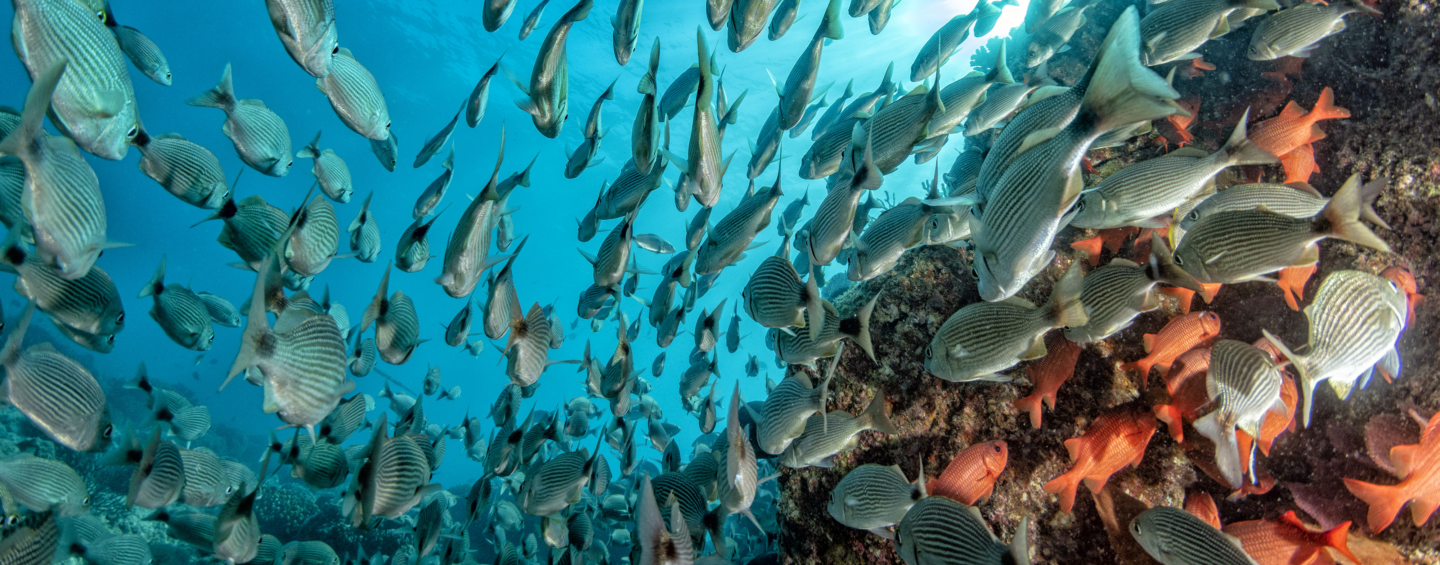Earlier this month, the release of the United Nations’ Intergovernmental Science-Policy Platform on Biodiversity and Ecosystem Services report on biodiversity brought with it dire news about the state of the planet’s species. The report cautioned that, unless human society embarks on a path of transformative change, as many as 1 million plant and animal species are threatened with extinction, many within decades.
People were rightly alarmed by the information in this report, which included warnings about society’s impact on marine ecosystems and species. But amid the calls for more sustainable policies and practices, which we wholeheartedly support, there was one that we have a problem with – the appeal to stop eating fish and other kinds of seafood altogether as the only way to save the seas. We feel that this is a misguided, and shortsighted, reaction to the very real problem of unsustainable and illegal fishing worldwide.
Around the globe, about three billion people depend on wild-caught and farmed seafood as their primary source of protein. At the same time, as many as 60 million people work directly in the fishing and aquaculture industries worldwide, not to mention the hundreds of millions of people who indirectly benefit from the sector. When produced responsibly, fish is one of the healthiest and least impactful sources of animal-based protein – in terms of contributions to climate change or land degradation – as compared to other sources such as beef or chicken.
One of the founding principles of SFP was that boycotts are not the best way to change an economic system. Our founder and CEO, Jim Cannon, created SFP with the belief that the best way to effect change is to work closely with all stakeholders in a fishery – up and down the supply chain – to implement sustainable practices and reduce the negative environmental impacts of fishing. We accomplish this goal through market leverage: As world market demand for more sustainable seafood products grows, the sector’s major seafood purchasers seek out suppliers who can provide product that is caught in a sustainable manner. This, in turn, provides incentives for seafood suppliers and fishers to improve their practices and limit environmental harm. When industry players who have a stake in the future of the world’s fisheries and fish farms use their influence to demand improvements, change happens fast. But if consumers stop eating fish, there is no leverage, and thus no incentive for change at the fishery or fish farm.
SFP’s overarching goal has always been to see that 100 percent of seafood worldwide is produced sustainably – in other words, to give everyone in the world the chance to eat sustainable seafood. And we recognize that sustainable management of seafood resources does not just mean ensuring the continued productivity of fisheries and the availability of seafood products for the world market. Equally important is safeguarding the continued health of marine and aquatic ecosystems, by reducing bycatch of endangered, threatened, and protected species such as sharks and sea turtles; reducing the spread of disease among aquaculture farms; eliminating the use of harmful fishing gear; and protecting the livelihoods of fishers and other seafood producers.
It is a fact that sustainable management of fisheries can also help to safeguard biodiversity and ensure healthy marine and aquatic ecosystems. While the UN report did paint a grim picture of the state of the world’s biodiversity, it also offered recommended actions for conserving the Earth’s marine biodiversity, many of which echo SFP’s approach, including ecosystem-based approaches to fisheries management, effective quotas, marine protected areas, protecting and managing key marine biodiversity areas, and working closely with producers and consumers.
So, if you were one of the millions who were alarmed by the UN report, by all means, rise up! Take action! But don’t do it by eliminating seafood from your diet or stopping selling fish. There are many other, more productive, ways for seafood supply chain actors to instead work to increase the demand for sustainably produced seafood. Support SFP’s Target 75 initiative, with its goal of ensuring that 75 percent of seafood production in key sectors is sustainable or making regular, verifiable improvements by the end of 2020. Become a T75 Champion and show your commitment to your customers and your suppliers. Join your colleagues on a Supply Chain Roundtable. Consider starting or supporting a fishery improvement project or an aquaculture improvement project. Speak out, and through our continued activities, SFP will help to ensure that your message is heard all the way down the supply chain, and that our seas and the abundant life they support and seafood resources they provide are sustained for generations to come.

